Rising Damp Treatment Cost
Last updated 2nd September, 2024
Rising damp is something you can’t ignore. As the name suggests, rising damp happens when moisture creeps up from the ground and infiltrates porous building materials, brick, stone and mortar, causing damp patches on your home’s walls, peeling wallpaper, and musty odours.
A standard damp survey can cost between £100 to £600, depending on your house’s size.
In this article, we’ll discuss rising damp treatment prices to give you a good idea of the budget you may need, explain the various methods of fixing rising damp issues, and explain how to find and hire a professional contractor to carry out the work for you.
Let’s go.
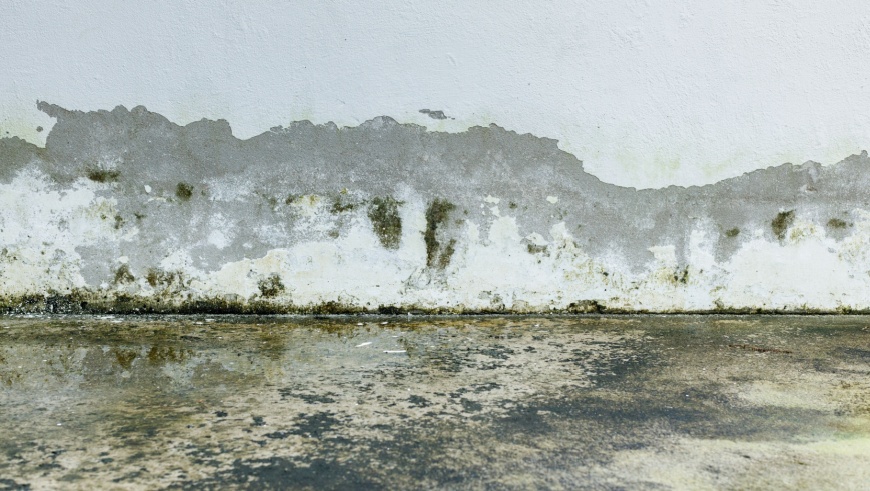
Table of Contents
What Is Damp?
The issue is most commonly seen in older properties where the original damp proof course (DPC) has failed. If you’re aware of the signs of rising damp in your home, prompt action is recommended to protect the structure of the building, as well as the health of your home’s inhabitants.
The first step is to identify your exact damp problem. To do this, it’s recommended that you carry out a damp survey. A standard damp survey can cost between £100 to £600, depending on your house’s size.
This can give you one of two results: it’s a small problem with a relatively simple fix, or the problem may be more extensive than you realise, requiring immediate attention.
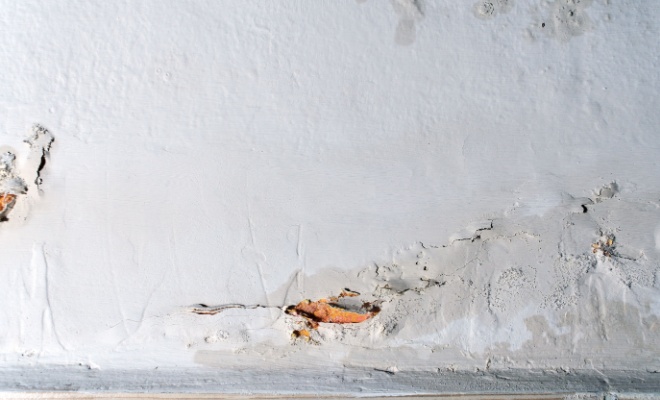
Whatever the outcome, it’s important you’re made aware of it as untreated damp can lead to structural issues for the property, as well as health issues for the property’s inhabitants.
Here are the main types of dampness to be aware of:
- 1. Condensation: This is most commonly seen in rooms with a high moisture content (such as kitchens and bathrooms). You’ll usually find condensation on windows after water vapour has fallen, such as after a shower or when the outside temperature is vastly colder than your internal temperature. While condensation can easily be sorted, if left for long periods without attention, it can lead to mould formations and can create general dampness in your home.
- 2. Penetrating Damp: This happens when moisture comes into your property from outside, leading to damp and mould formations. Unlike rising damp, this can be through your property’s brickwork and rendering, roof, guttering, or doors and windows as a result of driving rain.
- 3. Rising Damp: As the name suggests, rising damp is a problem caused by moisture coming up into your property from the ground that isn’t being prevented by a DPC. This is most common when the water table is high or there isn’t suitable drainage around your home which can lead to moisture penetrating your property’s floors, walls, and foundations.
Now we understand the different definitions of damp, let’s examine the costs and treatment of rising damp issues in particular.
How Much Does Rising Damp Treatment Cost?
Rising damp treatment prices are around £2,750 on average, depending on the complexity and scale of the job. However, depending on the treatment method, the size of your property and the scale of your moisture problems, the price can increase and decrease.
Let’s take a closer look at some estimated costs:
| Method | Terraced | Semi-Detached | Detached |
|---|---|---|---|
| Damp proof membrane | £100 to £150 per m2 | £100 to £150 per m2 | £100 to £150 per m2 |
| DPC Injection (one wall) | £400 to £600 | £700 to £800 | £600 to £650 |
| DPC injection (entire house) | £800 to £1,000 | £1,800 to £2,400 | £1,700 to £2,300 |
| Plastic DPC injection (one wall) | £200 to £400 | £400 to £450 | £600 to £650 |
| Plastic DPC injection (entire house) | £500 to £700 | £850 to £1,000 | £1,900 to £2,350 |
| Drainage channel (one wall) | £180 to £220 | £280 to £320 | £400 to £500 |
| Drainage channel (entire house) | £300 to £340 | £500 to £600 | £1,000 to £1,500 |
The main method of treating rising damp problems is to fix issues with the property’s damp proof course (DPC). The DPC is an integral protective barrier that protects your property from moisture rising from the ground and penetrating your home’s walls, floors and foundations.
Common treatment methods include:
- 1. Replacement damp proof membrane - between £100 and £150 per m2.
- 2. DPC injections - ranging from £400 to £2,300+ depending on the type of injection, house size, and severity.
- 3. Chemical damp proofing - between £750 to £3,000, depending on house size and severity.
Depending on the severity of your rising damp issue, you may be able to treat just one specific area or wall to tackle the problem. However, if the rising damp has been left for a long time and is well-established, you’ll be looking at a far bigger job that potentially covers the entire house.
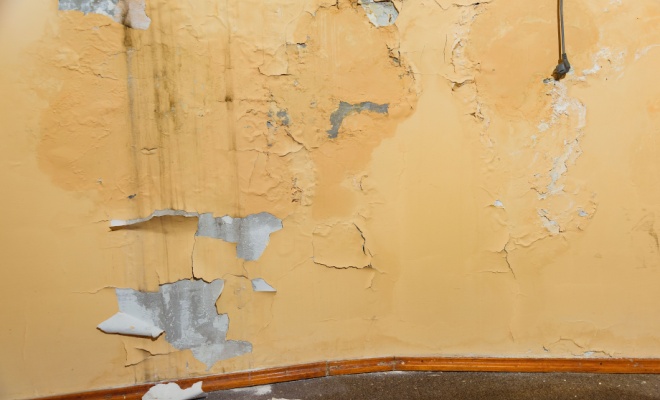
DPC injections are a common way of treating rising damp. They are injected into holes that have been drilled into the property’s mortar joints and work by penetrating the masonry and creating a water-resistant barrier.
Subject to the type of damp proofing solution you choose, costs can range from £400 to £600 for a single wall of a terraced property to £600 to £650 for a detached home’s single wall. If you need to treat the entire house, the prices will increase to around £800 to £1,000 for a terraced house and £1,700 to £2,300 for an entire detached house.
Rising Damp Treatment Options and Prices
Depending on your specific rising damp issue, different methods of treatment can be used to tackle the problem. Here are some treatment options and their associated prices:
| Method | Total Estimated Cost |
|---|---|
| Damp proofing course | £500 to £5,000 |
| Chemical damp proofing | £750 to £3,000 |
| Injection damp proofing | £1,000 to £5,000 |
| Damp proofing basement | £125 per m2 |
| Damp proofing chimney | £75 per roll |
Cost Breakdown Calculator
The total cost for DPC injection of an entire semi-detached house, including damp survey: £2,450
Supply
£1600
Labour
£500
Damp survey
£350
Damp Proofing Course
Main damp proofing courses are installed when properties are first constructed. These are commonly physical DPCs, where plastic is widely used to create a barrier. This costs around £500 to £5,000+ depending on building size.
It is possible to retrofit DPC solutions, which we will detail in the next few options.
Chemical Damp Proofing
Chemical damp proofing creates a waterproof barrier around your home to prevent water from rising and causing dampness. This can be done either as a surface application, where a solution is applied to your home’s walls to create a barrier or via chemical injection, which creates a barrier within the walls.
Depending on your house size and chosen method, this can cost anywhere from £750 to £3,000+.
Injection Damp Proofing
Treating damp with injections is a common method that works by injecting a solution into your property’s walls to prevent rising damp. In this method, holes will be drilled into the walls at regular intervals and then filled with the chosen DPC solution before being sealed to return the wall to its original appearance.
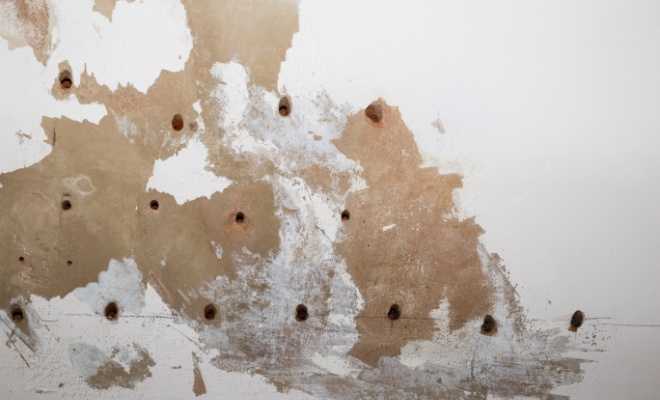
Depending on the type of injection and solution, this can cost anywhere from £1,000 to £5,000+.
Damp Proofing Basement
If your property has a basement or cellar, you need to keep a close eye on it to act quickly in the event of any tell-tale signs of damp formation. As your home’s basement might not be a place you visit every day, it’s important to carry out routine inspections, as small issues can quickly turn into costly problems if left unattended.
The cost of cellar or basement damp proofing is typically around £125 per m2, but prices can be raised if the issue is well-established.
Damp Proofing Chimney
While it might not be something we think about all too often, if your property has a chimney stack, you need to regularly maintain and inspect it to prevent any issues from forming. Unfortunately, damp proofing your chimney can be an expensive task as you’ll need a scaffolding hire to carry out the work safely, bumping up your overall costs.
Your contractor will be able to assess your chimney stack and suggest the best course of action, but the treatment may require the entire chimney apparatus (from breast to stack) to be treated. This costs around £75 per roll of chimney damp proofing, and you’ll need to add on labour and scaffolding/skip costs on top of that, too.
Additional Costs
Rising damp can, unfortunately, cause a cascading effect of issues in your property. Depending on the severity of the issue and how long it has been left without treatment, the associated issues may be quick to fix or may require more extensive treatment.
Here are some common follow-on jobs to add to your initial cost of treating rising damp:
Scaffolding Hire
If your home’s chimney has been impacted by rising damp, or is the cause of dampness in your property, scaffolding hire will be required to get the job done safely. This can cost around £500 for one week’s hire, but prices can vary depending on the length of your hire, the height of your property, and any access issues that may need to be considered.
Structural Engineer Survey
You may want to enlist the expertise of a structural engineer to assess your property’s structural integrity following any damp treatment. If your home’s timbers have been impacted, you need to have them looked at to ensure their safety. If moisture has penetrated the wood, leading to rotting timbers, you will need these replaced to guarantee the safety of your home.
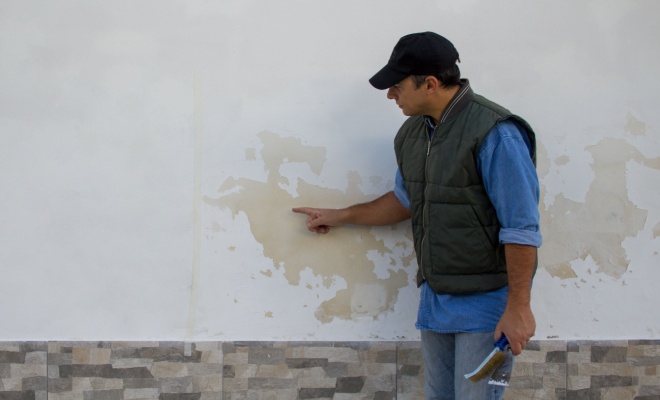
Structural engineer surveys can cost between £500 and £1,500, depending on the size of your property and the level of detail requested.
Re-plastering
Damp can cause issues with peeling wallpaper and can wreak havoc with your property’s internal walls in general. If this problem has been left for a while without remedy, you may need to re-plaster some of your home’s walls to restore their integrity.
Re-plastering a small room can cost anywhere from £390 to £500, while a large room can command prices closer to £550 to £700. If you can get away with patch repairs instead, these are around £70 to £130.
Painting and Decorating
Once re-plastering has taken place, the next job is up–painting and decorating. If it’s a simple painting onto a freshly plastered wall, this will cost around £250 and take around 4 to 8 hours, depending on the room’s size.
If you haven’t had to re-plaster but do need the old wallpaper stripping, this will cost slightly more, at £350. If your room’s woodwork also needs a refresh, this will bump the decorating costs up to around £500.
This is an area where you can trim your costs, as you can paint and decorate–and even plaster a room–yourself if you have the tools, equipment, and willingness to do so.
Skip Hire
If you’re having work done on your home’s walls (such as re-plastering or extensive re-decorating), you'll likely need a skip. Depending on the size, this can cost around £180 to £320.
It’s important to note that skip permits may be required if you’re planning on having the skip at the roadside. These charges differ depending on your county but can range from £25 to £35 for one week, with a typically lower charge for subsequent weeks.
Labour Costs and Time Frames
Damp proof treatments typically take a few days to complete, with exact times depending on your property’s size and the severity of the issue. A DPC injection to just one wall can take 2 to 3 days to complete, while an entire house can take 5 days or more to finish.
Contractors are likely to charge around £40 to £80 an hour in labour, equating to £300 to £600 per day’s work. However, these charges are most commonly incorporated into the total project fee and are based on the individual job and the work involved, so may not always follow this convention.
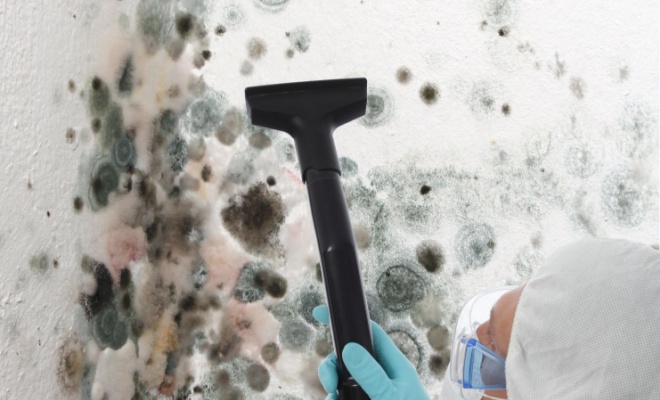
Prices will vary regionally, with costs higher in cities with increased demand, such as the southeast and London in general. You can also expect your prices to increase during peak months, as damp proofing needs to be completed in dry weather (which can be hard to come by in the UK).
If you are having a solution applied as a surface coating, the additional moisture from rain can lead to adhesion issues, reducing the method’s efficacy. This means that charges are likely to be higher in the summer and autumn months, where the weather is typically drier than in winter.
What Does Rising Damp Treatment Entail?
When your damp proofing contractor arrives at your property, these are the steps they’re likely to take:
- Damp Survey
The first step is to identify the type of damp your property has. The contractor will conduct a survey to do this, giving you a diagnosis to work with. - Treatment Identified
Depending on the extent of your rising damp issue, the contractor will suggest the best method of treatment. This may be a physical DPC installation–where your existing DPC is removed in sections and replaced–or a DPC injection, where the solution is inserted into your property’s walls following a series of spaced-out drilled holes. - Re-plastering, Re-painting, and Making Good
Once the treatment has been applied, you will need to repair any damage sustained as a result. This can involve filling in drilled holes with a waterproof sealant or re-plastering if the treatment has been applied inside your home. Painting and decorating will then occur, bringing your home back to its original state.
DIY Rising Damp Treatment
If your property has minor damp problems, you can treat them in a DIY setting—condensation issues can be easily rectified with increased ventilation, for instance. However, when dealing with your home’s damp proof course, it’s recommended that you seek professional advice to ensure the longevity of your structure, as rising damp can lead to a whole host of complications with hefty price tags.
While DIY damp proofing isn’t recommended, you can make cost-effective choices by painting and decorating yourself once the treatment has been installed. If you are happy to, you can even try your hand at re-plastering if this is required. Similarly, if your home’s woodwork has been affected (areas like skirting boards and coving) you can replace these yourself with ready-made products from DIY shops.
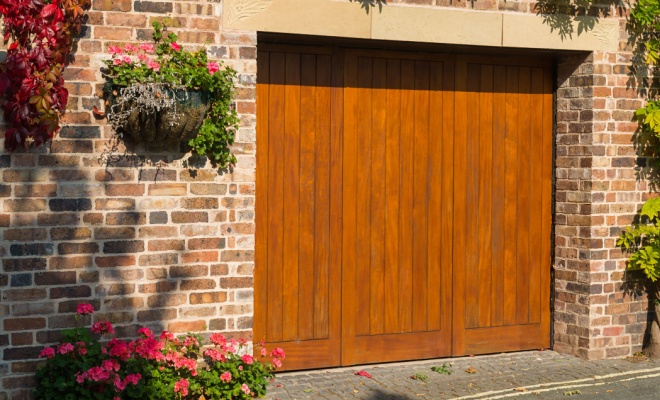
The best course of action is to ensure your home has good ventilation at all times to help with any moisture-related issues. Using extractor fans, opening windows and using dehumidifiers can all help this effort.
Compliance and Regulations
Gov.uk states the need for timely treatment of damp in residential properties. While ventilation is stated as a workaround treatment, ensuring the core problem is dealt with is the best route to ensure a safe living space free from mould spores.
Homes in new construction must have damp-proof courses or membranes installed to resist moisture from the ground. NHBC states that: “Damp-proof courses shall adequately resist moisture from reaching the inside of the building.”
They continue to state that DPCs should be:
- Positioned a minimum of 150mm above external finished ground or paving level
- Linked with any DPM
- Of the correct width and fully bedded
- Either welded or lapped by 100mm minimum
- Impermeable
Your contractor can advise you on the regulations and compliance for your property, so it’s best to speak to them about any questions you may have.
FAQs
Finding and Hiring a Professional
Once you’re sure of your rising damp issue, it’s time to call in the professionals to take care of it and restore your home to a dry environment. While it may be tempting to jump straight in with the first contractor you find, it’s prudent to collect a few different quotes to ensure you’re getting a fair and competitive price–we suggest collecting at least three different quotes.
Be sure to look at the trader’s experience and references, and pay close attention to their previous work to see if they have experience in your exact issue. With a problem as critical as rising damp you want to ensure the trader is skilled in effectively treating it.
Before agreeing to work with a contractor, ensure you ask for a detailed and itemised breakdown of all costs. If anything crops up that you’re not sure of, ask about it at this stage–it’s easier to amend here than it is after the contract has been signed. Be sure to check for any additional costs that may have been added on without your knowledge.
Lastly, be sure to check if the contractor’s work is guaranteed or has any warranties to ensure you’re covered in the event of their fix failing within a few months of application.
Sources
https://www.permagard.co.uk/advice/how-to-use-damp-proofing-injection-cream
https://nhbc-standards.co.uk/2022/5-substructure-ground-floors-drainage-and-basements/5-1-substructure-and-ground-bearing-floors/5-1-19-damp-proof-course
https://www.gov.uk/government/publications/damp-and-mould-understanding-and-addressing-the-health-risks-for-rented-housing-providers/understanding-and-addressing-the-health-risks-of-damp-and-mould-in-the-home--2








